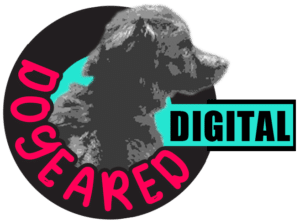Stories stick. When was the last time you left a networking event and could recite back bullet points from someone’s sales pitch? Probably never. But you’ve definitely recounted a gripping story you heard, whether it was last week’s episode of that heartstopping drama or your friend’s insane tale from her trip abroad.
Stories create impressions. And as a brand, you want to leave memorable impressions on customers so they choose you over competitors vying for their dollars. If people love a brand story, 55% are more likely to buy the product in the future, 44% will share the story, and 15% will buy the product immediately.
That’s why smart brands are ditching the boring product pitches and adopting storytelling techniques that spark interest and emotion. Let’s explore seven ways leading brands are crushing it on the storytelling front.
1. Origin Stories
Customers buy the story behind the brand as much as the product itself. Because at the end of the day, people would rather support another person over a faceless corporation. Origin stories allow brands to connect with customers on a more human level.
Mailchimp could easily talk about email marketing market share and features. But their About Page begins like this: “In 2001, when the internet crash left us jobless, we started a web design business out of a coffee shop. As our business grew, the need for an email marketing solution became apparent.”
And luxury eyewear purveyor Warby Parker grabs attention by starting their origin story with: “It all started with a problem. Our friend lost his glasses on a backpacking trip. His prescription sunglasses cost $500 to replace.”
Both of these origin stories show the founders overcoming a relatable setback through their ingenuity and entrepreneurial spirit. Weaving in those humble startup details grounds big brands and makes them more endearing.
2. Behind the Scenes
Pulling back the curtain gives customers an inside look at your brand values in action. Outdoor apparel brand Bonobos publishes lighthearted videos that satirize specific roles. Perfume house Shinola brings shoppers right into the manufacturing facility with striking images and stories showcasing their Detroit workers.
Offering this fly-on-the-wall view allows you to demonstrate your brand culture rather than just telling people about it via broad company value statements.
3. Customer Spotlights
User-generated content is still underutilized by many brands. But customer stories from real people out in the wild serve as social proof that you live up to the hype. Software firm HubSpot creates in-depth profiles of customers crushing their goals using HubSpot tools. Restaurant delivery service GrubHub runs a YouTube series spotlighting real owners of its restaurant partners sharing their experiences.
Leveraging the voices of happy customers as advocates beats a sterile press release any day.
4. Interactive Storytelling
Brands are borrowing ideas from the gaming world to let customers actively engage with stories rather than passively consume. HBO facilitated viral fan events and scavenger hunts leading up to Game of Thrones episodes. Fortnite held an in-game concert and music video debut that attracted millions of players.
While involving audiences takes more effort than standard marketing tactics, these memorable interactive experiences stick in customers’ minds long-term.
5. Video Storytelling
Video remains any brand’s strongest storytelling tool with its sights, sounds, and motion. And videos with compact story arcs work magic. Online retailer Casper donated to a local animal shelter to advertise their dog beds. Women’s razor brand Billie upended stereotypes by showing real women with actual body hair in their Project Body Hair video stories.
Investing in engaging video pays back many times over thanks to shares and press pickup.
6. Thought Leadership
Establishing your company as an authority in your industry helps attract customers seeking expertise. Top consulting firms regularly publish books, articles, and studies demonstrating their command of key issues and challenges businesses face.
Beyond publishing educational content, brands can highlight staff experts, host events, start podcasts, and partner with influencers to cement their thought leadership status.
7. Content Series
Successful TV shows get viewers hooked by telling episodic stories over seasons rather than cramming everything into a single movie. Smart content marketers use the same approach. Starbucks creates a cohesive brand identity with its social impact series highlighted in their Instagram stories. Outdoor gear retailer REI shares continuous stories spotlighting diverse groups making the outdoors more accessible and inclusive.
Rolling out an ongoing content series creates built-in reason for customers to keep engaging with your brand over time.
Find Your Unique Brand Voice
As you explore storytelling formats, remember to tailor your approach based on audience, industry, and campaign goals. Test different narratives to determine what resonates best and drives measurable impact.
Cut through the noise by embracing the power of unconventional, customized storytelling. With these seven springboards, you can develop compelling brand narratives that make your audience eager to tune in again and again.

